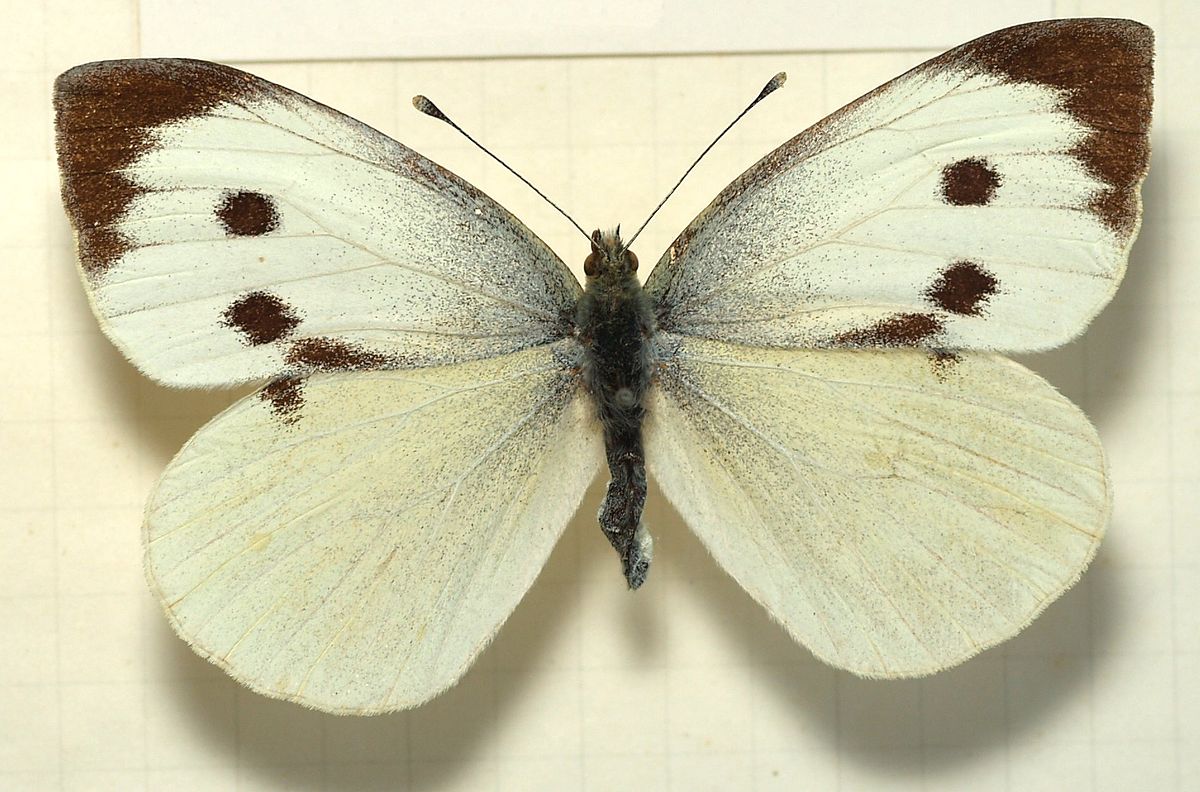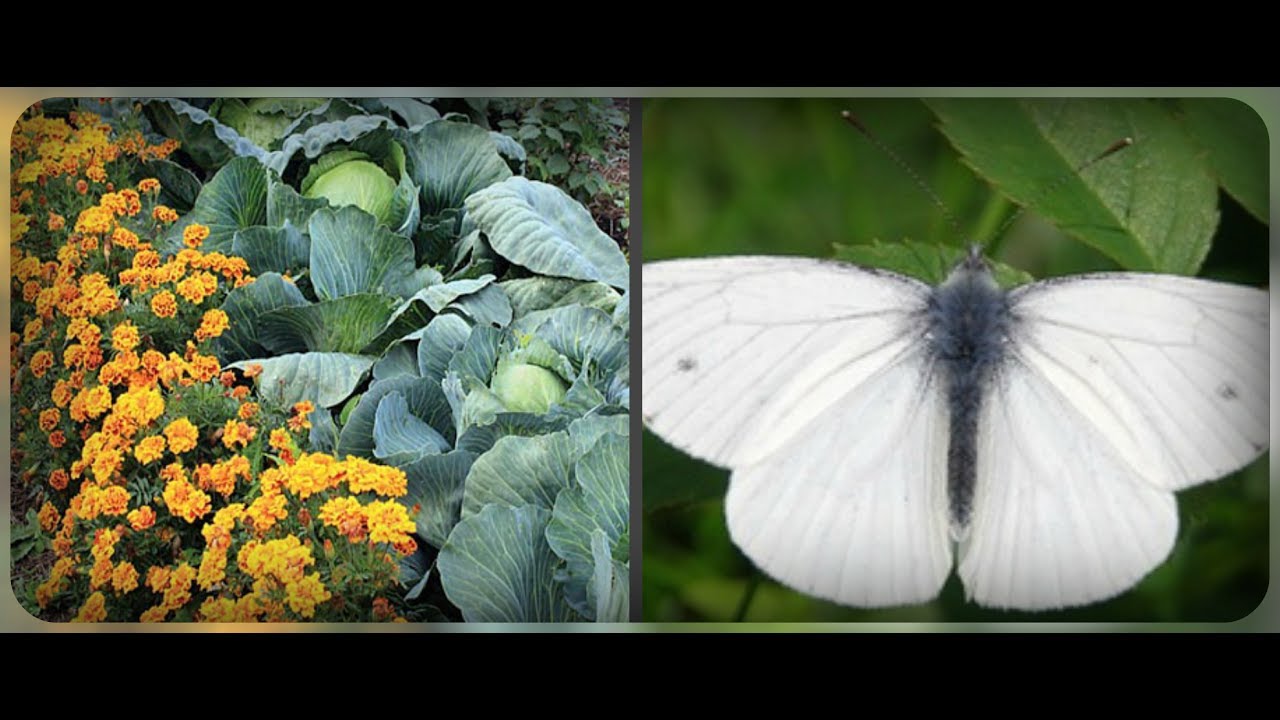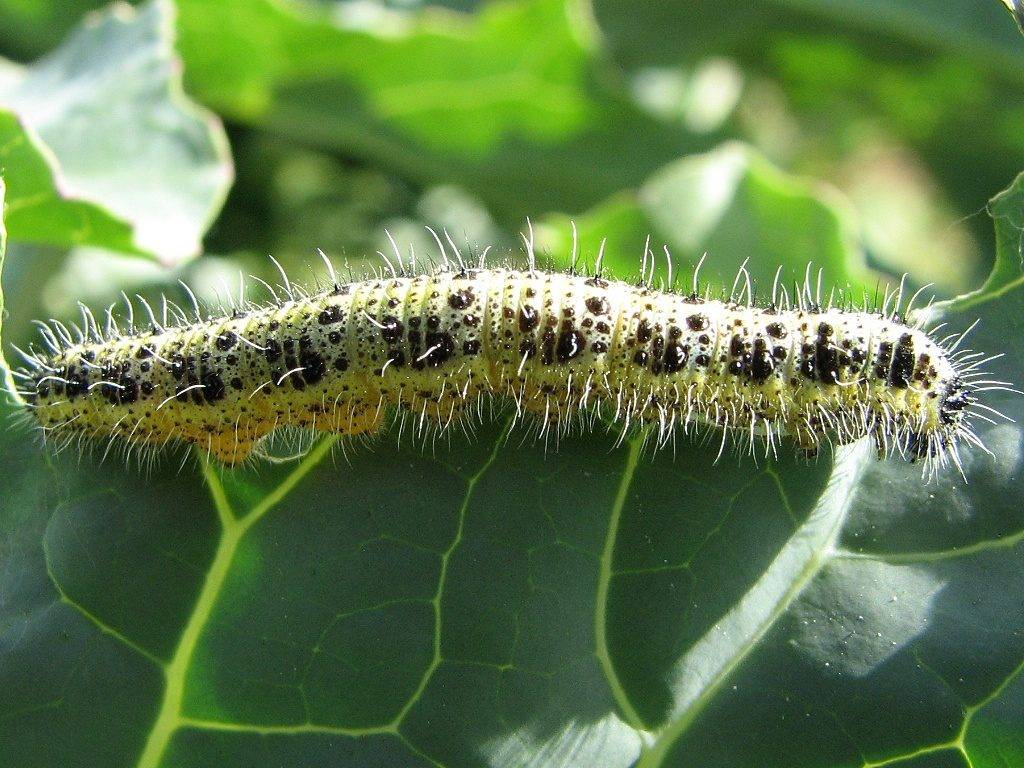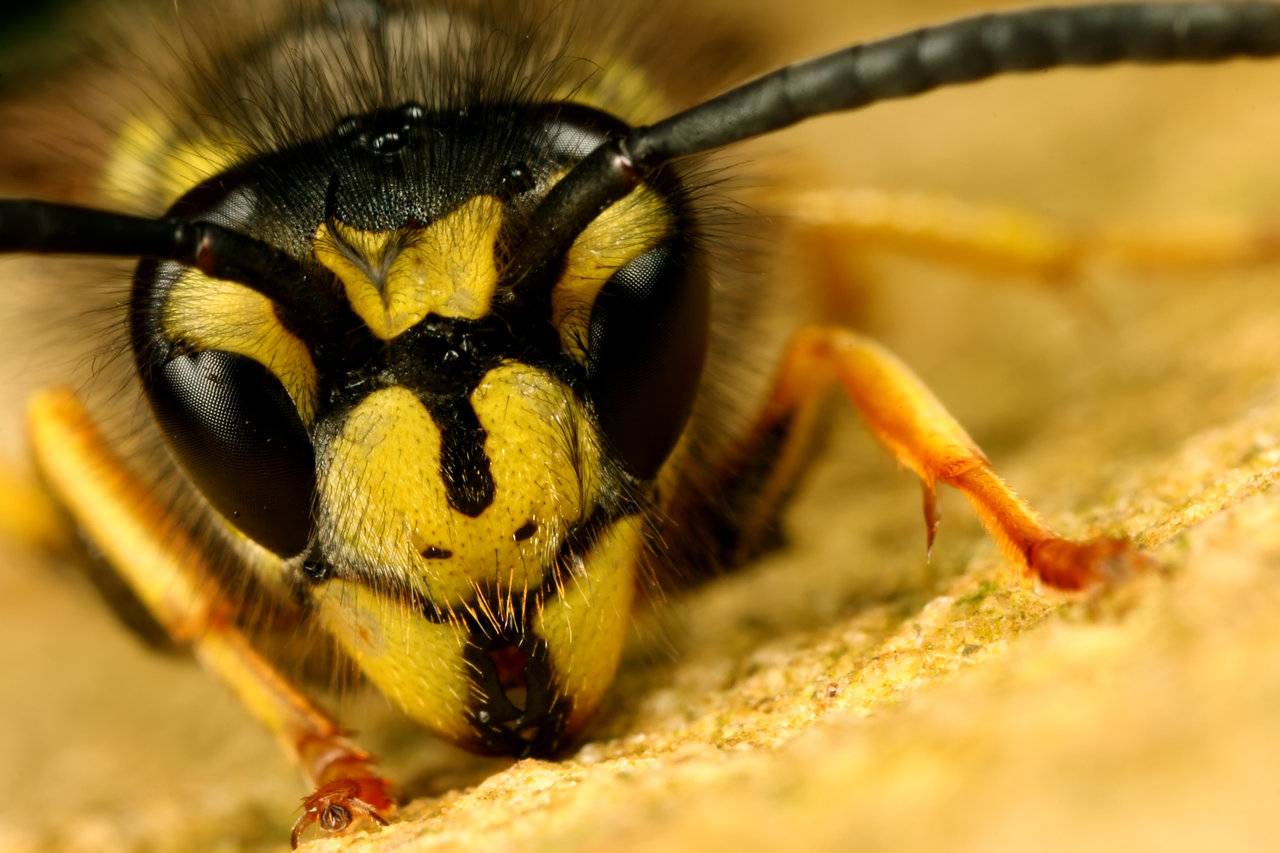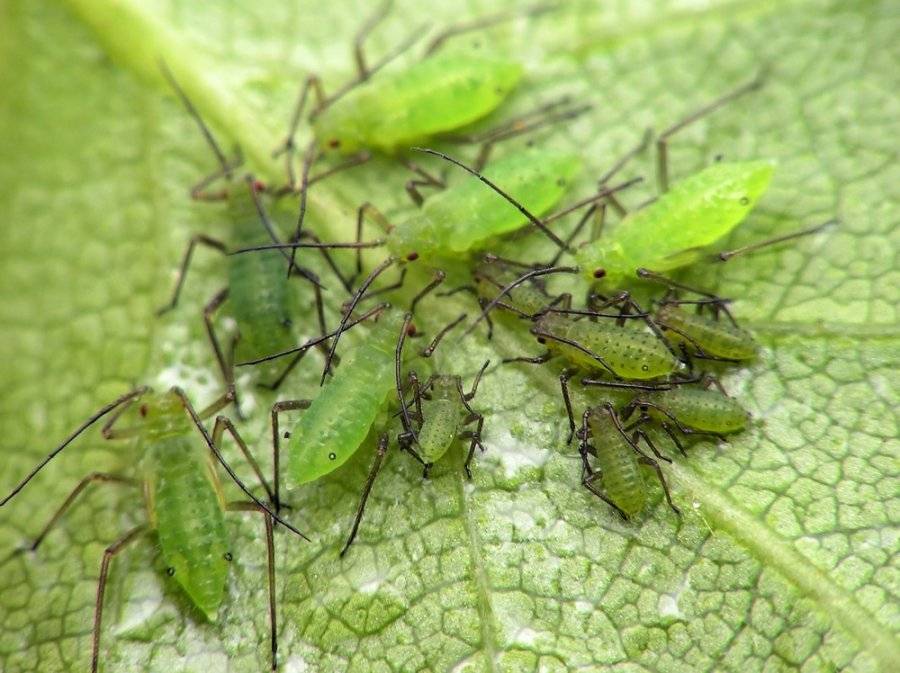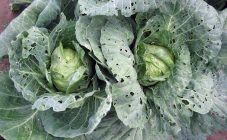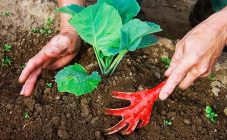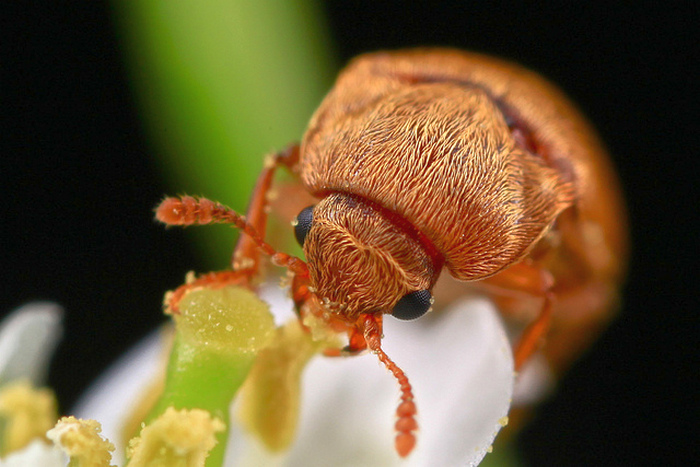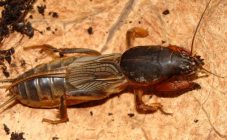Content:
Every gardener wants to grow a good harvest, protecting the planting from adverse external factors. One of them is insect pests. The cabbage white butterfly (Pieris brassicae), which lives naturally in meadows and forest outskirts, has also tasted garden plants. To fight this pest, you need to distinguish it from other insects and know its development cycle.
Characteristics and description of cabbage whites
Cabbage, or cabbage white, is a day butterfly. Many people call the bear insect a skits. These are two different insects that harm garden crops. Cabbage whiteberry classification:
- Type: Arthropods.
- Class: Insects.
- Order: Lepidoptera.
- Family: Belyanki.
- Genus: Ogorodnye whites.
- Type: Cabbage.
What does cabbage look like?
The wings of a cabbage whitewash are white, with black spots in certain places. Males have black edging at the apex of the front wings. Females have wings with two spots on the front wings and a black stroke on the hind margin. The front wing of the cabbage is 2.5 - 3.3 cm long. In span, the wings of the male reach 4.9 - 6.2 cm, in females - 5.1 - 6.3 cm. This is how an adult cabbage plant looks like.
Cabbage whitefish belongs to the order Lepidoptera, that is, its wings are covered with small chitinous scales. It is possible to consider and not confuse this butterfly with similar species only by catching it, since at rest the insect folds its wings and their pattern is not fully visible. The whitewash, due to the light green color of the back of the wings, is poorly visible on cabbage when the wings are folded. Mass flight, in temperate climates, in early summer (late May-early June) and in the second half (late July-early August). In the southern regions, butterflies fly three times during the summer season. Adult cabbage lives for about 3 weeks.
Cabbage whitewash belongs to insects with complete transformation. That is, it has stages: an egg, a larva, a pupa, an adult insect. After fertilization, butterflies lay eggs mainly on the underside of the leaf. Thus, they are protected from the effects of the environment and predators. Clutches of eggs are yellow; when ripe, they turn gray. Quantity - about 30 pieces. Each female is capable of laying up to 250 eggs in her life.
A young gray-green cabbage caterpillar with black specks and a yellow stripe on the dorsal side. The adult larvae have three yellow stripes and black spots on the green skin. Before pupating, the caterpillar undergoes four molts. It reaches a size of 5-6 cm.
Pupation occurs closer to autumn. Pupae can be found in old tree stumps, fences, under roofs, and on tree trunks and branches.
What does cabbage eat
In vegetable gardens, the insect infects cruciferous plants:
- cabbage,
- radish,
- radish,
- horseradish and others.
Larvae cause damage to plants. These caterpillars feed on fruits and shoots, first from the inside, and then from the outside, devouring tissue and leaving behind only veins in the leaves or, at best, large holes.
Cabbage can cause serious damage to the crop. With severe damage to the plant, metabolic disorders occur, moisture is lost - the shoots become sluggish. In conditions of high temperature and dry air, the culture stops growing and may dry out. Also, as a result of damage to the shell, the plant loses its immunity.The likelihood of contracting bacterial and fungal diseases increases.
Methods for dealing with cabbage
There are many ways to combat cabbage whites. It can be destroyed manually using biological and chemical methods.
Mechanical methods
- Collecting caterpillars from plants. In this case, shoots with leaves are examined from all sides.
- Destruction of pest pupae. Possible locations of cabbage are treated with a strong stream of water from a hose.
Such measures help to significantly reduce the number of these Lepidoptera.
Chemical methods
If the cabbage plants have staged a real invasion of garden beds, you can use one of the group of strong chemicals: Fufanon, Borey, Iskra. When using them, you must strictly follow the instructions.
Biological methods
To combat insects, special effective biological products have been created:
- Fitoverm. The active ingredient is avermectin. The remedy affects not only cabbage, but also ticks, scale insects, aphids, thrips. Decomposes quickly. This is both good and bad, since it does not have time to accumulate in the plant, but the period of action is also short. Hazard class for humans - IV. However, there is information that the drug is of III degree of hazard.
- Lepidocide. The active substance is the spore-forming soil bacteria Bacillus thuringiensis. They are aggressive towards the larvae of many Lepidoptera, including white beetles. It is not dangerous for a person.
- Actellic. Insecticidal preparation, organic compounds of which contain phosphorus. The period of action is short-term, but quite effective. It is important to follow the instructions when using.
Entomophages are also classified as biological weapons. These are living organisms that feed on a certain type of insect. The entomophage of the cabbage is the Pimpla rider (Pimpla Fabricius). The adult Pimpla, the adult stage of the insect, collects nectar. The larvae of this insect feed on caterpillars, including whites. To attract Pimple, honey flowers should be planted. It is best to avoid plants with a pungent smell, such as tansy, wormwood.
Wasps are another entomophage of cabbage. To make predators pay attention to the garden plot, it is enough to spray the plants with sweet water.
You can plant plants with a pungent smell, which, when growing and flowering, will scare away the butterfly and drown out the aroma of cabbage. These are tomatoes, mint, oregano, parsley, celery, carrots, dill, calendula, marigolds.
Traditional methods
There are common folk pest control methods that can seriously affect the number of pests. For example, spraying with solutions or sprinkling with natural substances:
- A solution of soda and laundry soap in a 4: 1: 1 ratio.
- A vinegar solution. Take 1 tablespoon of vinegar per bucket of water.
- A mixture of hot water and ash. For 10 liters of water, 0.5 liters of ash is taken. Insist the solution, get rid of the sediment, add 2 incomplete tablespoons of laundry soap.
- Ash. The plants are sprinkled with ash. Preferably on a cloudy but not rainy day.
- Infusion of yarrow, wormwood, burdock. For one part of herbal raw materials, you need to take 3 parts of hot water. After 2-3 days, the infusion is filtered.
- Dusting with red pepper or tobacco.
- It is recommended to spray cabbage and other crucifers with an aqueous solution of valerian. One bottle is diluted in three liters of water.
Preventive measures
Prevention against whitewash will help prevent the mass settlement of the garden plot with this pest.
Actions to prevent the multiplication of cabbage:
- Burning plant residues at the end of the summer season.
- During the period of the first frost, the beds are dug up.
- The cruciferous crops are planted in a row to make it easier to inspect the plants.
- It is advisable to carry out the planting before the summer of the whites.
- Cultures attacked by cabbage are placed far enough from each other.
- Complete removal of weeds.
- The trunks of trees should be whitewashed so that there are no pupae on them.
- Change the planting site for the next summer cottage season.
White cabbage can do a lot of harm. But if you observe timely preventive and protective measures, it is quite possible to cope with it and prevent an invasion of the garden plot, preserving the harvest.
